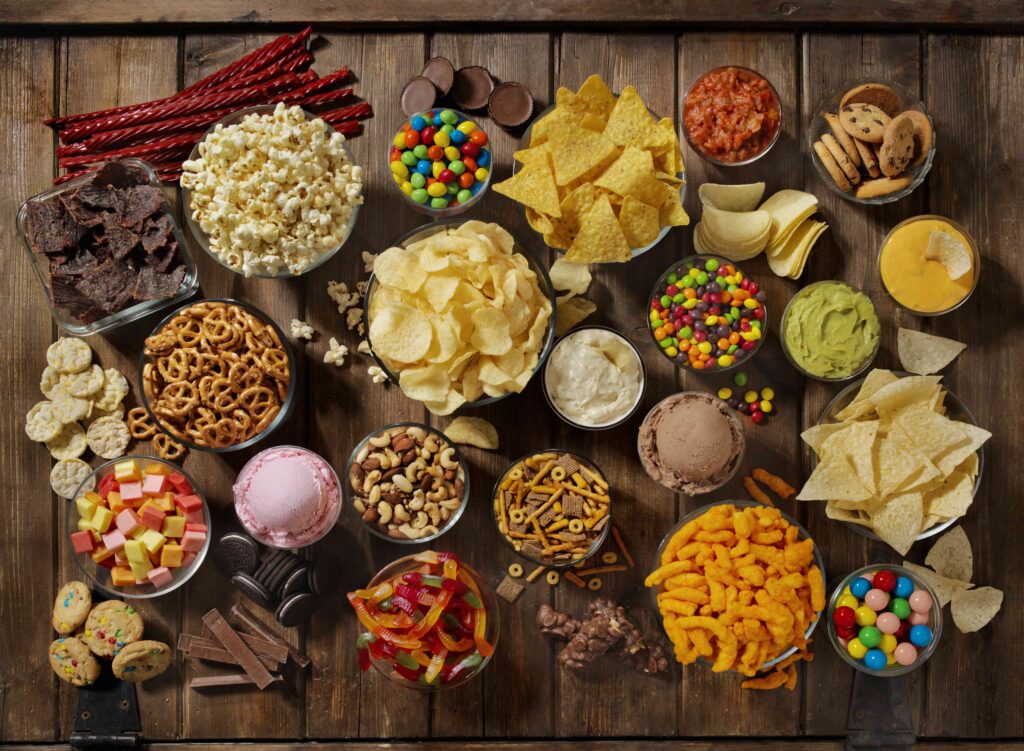:max_bytes(150000):strip_icc():format(jpeg)/Health-GettyImages-1149135424-9102f3f4fd804005a801cbcb23eb5eb8.jpg)
Ultra-processed foods like soda and hotdogs might taste good, but can you really be hooked on them?
That’s one of the questions at the center of a new, first of its kind lawsuit that claims ultra-processed foods are addictive, raising questions about how these products impact our brains.
The lawsuit was filed in Philadelphia by a man named Bryce Martinez, who claims that he developed type 2 diabetes and non-alcoholic fatty liver disease after eating ultra-processed foods made by several companies, such as Kraft Heinz, Mondelez, and General Mills. Martinez was diagnosed with both conditions when he was 16.
In the lawsuit, Martinez alleges that the companies knew their products were harmful and deliberately made them as addictive as possible.
The lawsuit also claims that the companies “used their cigarette playbook to fill our food environment with addictive substances that are aggressively marketed to children and minorities.” (Tobacco companies Philip Morris and R.J. Reynolds previously owned companies that became Kraft Heinz and Mondelez.)
The lawsuit claims the companies engaged in conspiracy, negligence, fraudulent misrepresentation, and unfair business practices and seeks compensatory and punitive damages.
Ultra-processed foods have been linked with several serious health conditions, including certain cancers and dementia. While it’s unclear what will happen with the lawsuit, it’s understandable to be curious about whether ultra-processed foods can actually be addictive—and whether your penchant for them is a result of it.
Here’s what addiction researchers and food scientists had to say.
Food processing levels are based on a scale known as the NOVA classification system. The scale puts foods into one of four categories:
- Unprocessed and minimally processed foods. These foods are in their natural state or are barely altered. They include things like fresh fruits and vegetables, nuts, and milk.
- Processed culinary ingredients. Foods in this category have been processed minimally through methods such as pressing, refining, grinding, or milling. Almond flour and olive oil are examples.
- Processed foods. These foods are altered from their natural state and usually contain sugar, oil, or salt, like canned tuna and canned vegetables.
- Ultra-processed foods. Ultra-processed foods are processed, adding additional ingredients like artificial colors and flavors, preservatives, and more for texture and longevity. These are often packaged foods and typically have a low nutritional value, Nicole Avena, PhD, author of “Sugarless: A 7-Step Plan to Uncover Hidden Sugars, Curb Your Cravings, and Conquer Your Addiction,” told Health.
“Ultra-processed foods are typically industrially manufactured products that go far beyond basic food processing, containing little to no whole food ingredients,” Erica M. LaFata, PhD, an assistant research professor at Drexel University’s Center for Weight, Eating and Lifestyle Science, told Health. “They are formulated using refined carbohydrates, added fats, sugars, and artificial additives like flavor enhancers, preservatives, and emulsifiers to maximize taste and pleasure.”
Despite their lack of nutrition, ultra-processed foods are incredibly common. “They account for about 70% of the current food supply in the U.S.,” Elisabetta Politi, MPH, RD, a dietitian at Duke Health, told Health.
It’s easy to talk about being hooked on your favorite chips or cookies, but scientists use very specific criteria when defining whether something is, in fact, addictive.
Addiction is a treatable, chronic medical disease that involves complex interactions between brain circuits, genetics, the environment, and a person’s life experiences, according to the American Society of Addiction Medicine.
People who have an addiction use substances or engage in behaviors that become compulsive. They usually continue them, even when there are harmful consequences.
It’s “very tricky” to determine whether ultra-processed foods are addictive, Jemma Sedgmond, PhD, a cognitive neuroscientist, eating behavior researcher, and senior lecturer at the University of the West of England Bristol, told Health.
“Evidence suggests that some individuals might be capable of experiencing an addictive relationship with food, and there are both biological and behavioral parallels between food addiction and other addictive behavior,” she said. “However, whether or not this has been driven specifically by ultra-processed foods is unclear, and we need to be careful about how we communicate any claims that ultra-processed foods are addictive.”
Ultra-processed foods can activate brain reward regions, though, Cassandra Lowe, PhD, a researcher and health neuroscientist at the University of Exeter in England, told Health.
“When we see an advertisement for these foods or eat them, we do see increased activation in areas of the brain often associated with reward, like the striatum and orbitofrontal cortex,” she said. “This can increase food cravings and the desire to eat these foods.”
But Lowe said that ultra-processed foods “are not addictive for most people in the same sense that cocaine and other substances are.” Instead, she said that consuming ultra-processed foods tends to fall into a habit-based eating cycle, given that they’re easy to get, very tasty, and tend to be heavily marketed.
“The feelings of pleasure and reward can make us feel better when having a bad day or when we are stressed,” she said.
Still, there is some data to “strongly suggest” that ultra-processed foods may be addictive, LaFata said.
“Ultra-processed foods are designed to deliver potent doses of rewarding ingredients that stimulate brain pathways associated with pleasure and motivation,” she explained. “Refined carbohydrates, like sugar and white flour, can cause sharp spikes and drops in blood glucose, enhancing reward-related brain activity in a manner that causes cravings.”
Fats used in ultra-processed foods also trigger the brain’s reward systems, LaFata said. “In addition, ultra-processed foods contain additives that have been intentionally included to enhance aspects of palatability, such as taste, texture, and appearance,” she continued.
Some people may be more vulnerable to this than others, LaFata said. “Studies have found that about 15% of individuals report exhibiting diagnostic indicators of substance-use disorders with respect to their ultra-processed food intake, such as continued intake despite negative consequences, withdrawal, and tolerance,” she said.
Whether you truly have an ultra-processed foods addiction or just find it hard to stop eating these foods, experts said there are a few things you can do to try to cut back.
“Breaking the cycle of dependency on ultra-processed foods involves both behavioral and environmental strategies,” Avena said. That means recognizing your personal triggers for eating these foods, like stress and boredom, which can empower you to make healthier choices.
It’s also better not to try to go cold turkey. “Abrupt elimination can be overwhelming, so instead, I suggest gradually replacing ultra-processed foods with whole, minimally processed foods,” Avena said. “This can make the transition more sustainable.”
She also recommends not keeping these foods in your home and planning your meals in advance to avoid relying on convenience foods, which tend to be ultra-processed.
Exercising regularly may help, too, Lowe said. “Engaging in as little as 20 minutes of moderate-intensity aerobic exercise can boost prefrontal cortex function and cognitive control, making it easier to control food cravings,” she said.
If you have ultra-processed foods here and there, you’re likely fine to keep doing just that. “Many are in agreement that consumption of ultra-processed foods in moderation is fine,” Sedgmond said. “It’s about ensuring that the majority of food comes from the unprocessed and minimally processed options where possible.”













